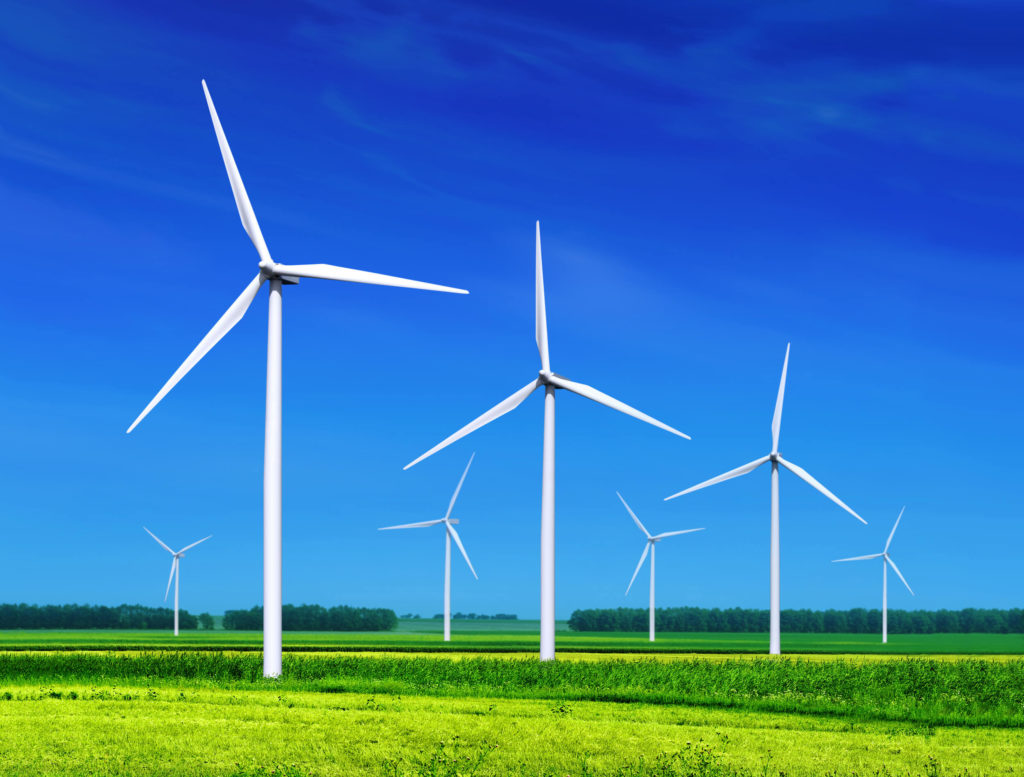EPRI Uses Data Analytics to Increase Wind Power Production
With 536 gigawatts of global capacity as of 2017, wind power is a mainstream power source. Yet as operators focus on reducing wind energy’s levelized cost of electricity, they face a significant barrier: The metrics typically used to assess wind farm performance don’t provide a clear picture of energy production and the potential for improvement. There is a potential solution: Readily available turbine data can be analyzed to reveal underperformance, guide maintenance, and reduce operational costs.
“Operators use metrics that tell them how often the turbines are running, which is usually between 95% and 98% of the time,” said EPRI Senior Project Manager Brandon Fitchett, who is leading research to improve measurements of wind farm performance. “The industry is very good at assessing how often wind assets are running but does not know precisely how well they are running.”
The most widely accepted method for assessing efficiency involves measuring the wind speed that hits a turbine along with its corresponding power output. “This standard test, established by the International Electrotechnical Commission (IEC), uses wind speed sensors to correlate wind speed and power output,” said Fitchett. “The IEC test typically uses calibrated instrumentation mounted on a hub-height meteorological tower or other calibrated wind measurement equipment located upwind from the turbine,” said Fitchett. “This is not cost-effective nor physically possible to maintain in front of every turbine for the life of a project.”
Typically, such measurements are taken on a small subset of a wind farm’s turbines during the first year of operation, and they don’t account for equipment degradation and performance shortfalls over time.

Operational expenses account for more than a quarter of onshore wind’s levelized cost of electricity. Better measurements and data analytics can reduce these expenses while boosting turbine production and revenue. A 1% annual production increase at a typical wind farm with 100 two-megawatt turbines can boost revenue by $250,000–$500,000. Based on EPRI’s performance analytics research, most wind farms likely have an opportunity to increase production.
Collaborating with power companies such as Duke Energy, DTE Energy, and Southern Company, EPRI is examining and implementing innovative analytical techniques with potential to monitor performance more comprehensively and accurately. At several wind farms across the United States, EPRI researchers are testing these methods using up to three years of supervisory control and data acquisition (SCADA) data from hundreds of wind turbines.
“We’re using the owners’ databases to collect about 100 readily available, historical data streams from each wind turbine, including the speed and direction of wind, the pitch of turbine blades, the rotation speed of rotors and generators, and power output,” said Fitchett.
After the turbine data go through a quality assurance process, researchers use them to analyze power production over time. Results for each unit are compared with those of nearby turbines as well as with generation estimates provided by turbine manufacturers. By analyzing months of data in this way, EPRI pinpointed turbines that were underperforming, investigated the causes, and recommended corrective actions to increase power production.
“The analyses revealed that the biggest opportunities to improve performance involved correcting equipment calibration, such as blade pitch and alignment with the wind,” said Fitchett.
EPRI confirmed Duke Energy’s suspicion that extended shutdowns as a result of high winds had negatively impacted production at some of its wind farms. “We knew it impacted us but didn’t realize to what extent,” said Dustin Wambeke, director of performance services at Duke Energy Renewables. “EPRI was able to capture that for us precisely. We can now correct the problems ourselves or inquire more intelligently with the manufacturer.”
Seeing the value in better performance assessment, Duke Energy recently hired new wind power staff with expertise in analytics. “We want to maximize the value of our data and enable our performance engineers to identify and fix problems using more sophisticated analytical techniques,” said Wambeke.
EPRI is sharing its findings with participating utilities, enabling them to monitor and mitigate turbine underperformance.
“We’re handing over results that companies can use immediately, and we’re providing them with techniques that they can use on their entire fleets for years,” said Fitchett—adding that the results of this project could inform a new standard for measuring wind turbine performance.
EPRI plans to provide utility members with best practices and methods for turbine performance monitoring, along with documentation of common underperformance problems and corrective actions. EPRI is developing new methods that enable operators to use monthly (rather than annual) data to identify turbine underperformance promptly.
Wind turbine performance monitoring is part of a broader body of EPRI collaborative research aimed at reducing wind power costs and improving performance and reliability.
EPRI Technical Experts:
Brandon Fitchett, Rajasekhar Pulikollu
Additional Resources:
- Predictive Analytics for Wind Turbine Design and Operations: Value of Increased Reliability and Reduced Levelized Cost of Energy
- Wind Turbine Performance Analytics Techniques: Where to Look for More Production—Tracking Every Asset with Wind Farm Owners’ Data
- Wind Turbine Performance Monitoring Demonstration (project description)


